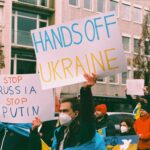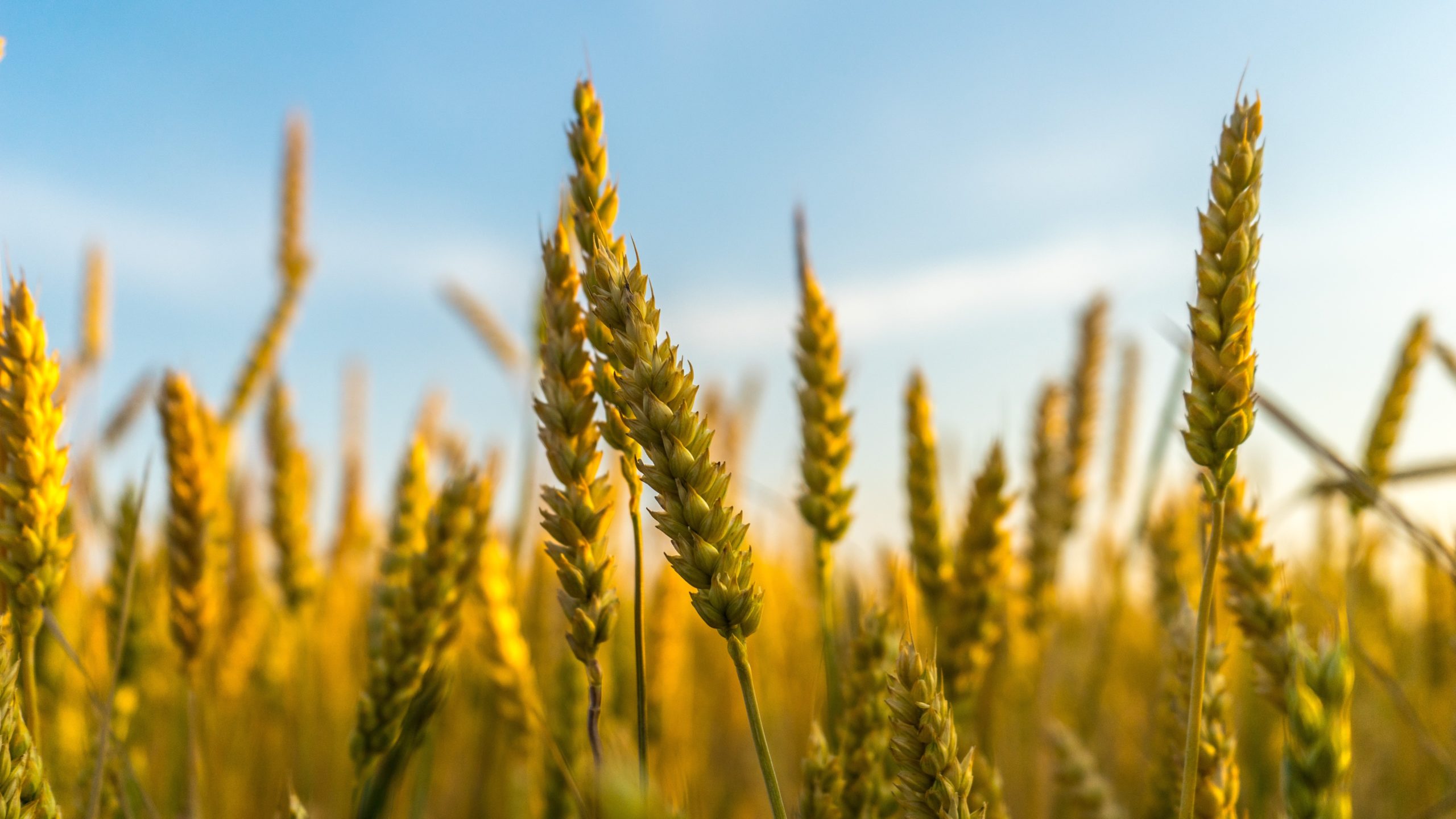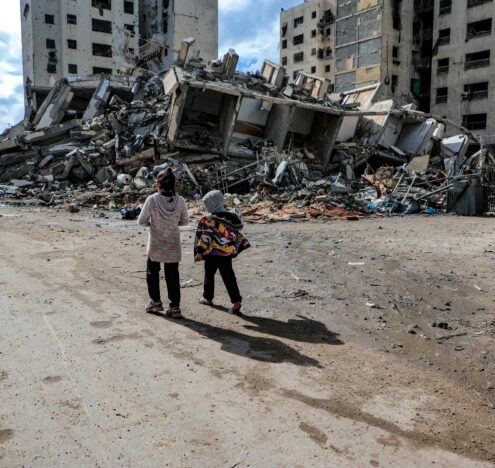COVID-19 and climate change have already escalated food insecurity worldwide. Russia’s invasion of Ukraine has further disrupted grain and fertilizer exports, causing supplies to dwindle, prices to rise, and some countries to face the threat of a looming food crisis. As markets swing with volatility, the reactions of some countries will have significant ramifications for global food security and resilience to climate change.
Russia is the world’s largest wheat exporter and combined with Ukraine, both supply about 30% of global exports. Ukraine also supplies nearly 17% of the world’s exports of corn, which recently rose in price to over $8/bushel for the first time in 10 years. Along with rice, corn and wheat are the most critical commodities ensuring global food security, especially in the Middle East and North Africa region, which includes only 6% of the world’s total population but over 20% of those living with acute food insecurity. For example, wheat makes up over half of the calorie intake for average households in Yemen. Egypt’s subsidized bread, which the state provides at about one-tenth of the actual cost, sustains two-thirds of the country’s population. Meanwhile, Lebanon imports 90% of its grain from Ukraine and Russia. However, after a port explosion in 2020 destroyed its primary grain storage, the country only has about one month of reserves available.
According to a recent UN report, at least 25 African countries import approximately one-third of their wheat from Russia and Ukraine. Somalia and Benin source nearly all of their wheat imports from both countries. As a result, even the World Food Programme (WFP), which supplies aid to food-insecure places, is now vulnerable. Last year, 70% of WFP’s wheat was purchased from Ukraine and Russia.
As Russia’s war on Ukraine continues, what does this mean for the world’s food?
THE DISRUPTION IN THE GLOBAL FOOD CHAIN
Many regular work operations have been placed on hold as thousands of Ukrainians have been forced to seek refuge outside the country or pick up arms to fight. And even when there are goods to export, many transportation routes have been shut down, including Ukrainian and Russian ports along the Black Sea. Meanwhile, sanctions are driving prices up as countries try to isolate Russia from the interconnected global market while minimizing financial impacts on their consumers. Even when food and crops are not directly targeted, economic sanctions can hamper Russia’s ability to trade internationally and make global shipping companies reluctant to do business in the region. As a result, some have temporarily suspended air and rail transport with Russia.
Some disruptions have come from domestic policies made in Ukraine and Russia. Ukraine announced an export ban on grains, sunflower oil, and other crops to help meet its own demand during the fighting. Russia has also suspended grain exports to the Eurasia Economic Union until the end of the summer. The US Department of Agriculture report suggests that combined wheat exports for Ukraine and Russia will be reduced by about 7 million tons as a result of these policies.
While the war rages in Ukraine, it will be up to the international community to adapt and fill the unexpected gap in grain supply. But how can the world do that?
Other countries, like India, have announced their intentions to increase their production to meet the demand for food crops. Yet, increasing production will likely require more fertilizer — and much of the world’s fertilizer and many of its feedstocks, including nitrogen and potash, come from Russia too. The Kremlin announced plans to suspend fertilizer exports in a protectionist move, citing a desire to meet domestic demand and keep food prices low. So even if other countries want to increase food production, their reliance on Russian fertilizers will make it difficult. Brazil, for example, imports 85% of its fertilizer, with about one-fifth of those imports coming from Russia and some coming from Belarus, which is also being sanctioned as one of Russia’s allies.
Fertilizer is an energy-intensive product, so the war’s strain on natural gas also drives up prices and limits the supply of fertilizer produced elsewhere. Following the invasion, US prices for the nitrogen fertilizer urea in New Orleans rose from about $175/ton to $705/ton. The cost of fuel has already caused some fertilizer plants to close in Europe. Without a replacement supply, farmers will have no choice but to cut back fertilizer use, which may reduce the size of the upcoming harvests across the world.
The Food and Agriculture Organization (FAO) price index, which is a measure of the monthly change in international prices of basic commodity foods, is at an all-time high. And the worst of it may still be to come — the FAO reported that the war in Ukraine could cause prices to increase another 8–22%. The concern of rising food prices is reminiscent of 2008 and 2011, when price spikes led to conflict and instability. The “silent tsunami” of rising food prices in 2008 caused social unrest in at least 40 developing and middle-income countries, such as Afghanistan, Somalia, and Haiti, where protests even caused senators to oust the prime minister. A couple of years later, in 2011, prices spiked again and likely contributed to the Arab Spring protests. Depending on how long the fighting continues, the upcoming crop harvest and planting schedules may be disrupted, meaning it could be years before food supplies return to normal.
ARE THERE ANY SOLUTIONS?
The colors of Ukraine’s flag represent blue skies over the country’s golden wheat fields, which is a particularly striking symbol. While the war rages in Ukraine, it will be up to the international community to adapt and fill the unexpected gap in supply. One potential solution is to make better use of the large swatches of arable land in the US and Europe currently being used to grow crops for biofuels. For example, the 38 million acres (15 million hectares) of land the US devotes to growing corn for ethanol could instead be replaced with food crops, which would help feed 150 million people.
The decision to return this land to food crop production is largely dependent on what is most profitable. For example, there was a rush to plant biofuel crops in the 2000s when farmers were reaping high profits, which were driven by the federal government’s tax credits and other subsidies. Today, the US government continues to support the biofuel sector, making it less likely that this land will be converted to food production to address the global food shortage.
In April 2022, President Joe Biden announced that the Environmental Protection Agency would issue an emergency waiver to allow E15 gasoline to be sold across the US this summer. The E15 blend uses more corn-based ethanol than the traditional blend and is usually restricted during warm months because it can contribute to poor air quality. According to the announcement, the plan is intended to save people an average of 10 cents per gallon of gas, but some experts have said the E15 likely won’t change the prices at the pump. Instead, an increase in E15 will likely cause more air pollution. Furthermore, the rise in demand for ethanol will use land that could otherwise be used to reduce growing global food insecurity.
A study by the International Food Policy Research Institute found the rising demand for biofuels to be one of the main drivers contributing to the 2008 food crisis by causing the demand for grain and vegetable oil to increase. Rising demand for biofuels can also create significant implications for the environment by causing demand to rise for arable land, which can lead to the degradation of forests and other carbon sinks. A study published earlier this year found that between 2008 and 2016, the US Renewable Fuel Standard, which mandates 15 billion gallons of ethanol be blended into fuels annually, caused national corn cultivation to expand by 6.9 million acres (2.8 million hectares) and increased demand for fertilizer, which is a relevant concern given the current volatility of the global fertilizer market.
THE IMPACT ON FOOD SECURITY & CLIMATE RESILIENCE
The war in Ukraine has exacerbated rising food prices and positioned many countries on the brink of food insecurity. It is joining a series of other threats that continue to expose the vulnerabilities of today’s food supply chains. In the past couple of years, those working to address international food insecurity often refer to the three C’s — conflict, climate change, and COVID-19 — causing food insecurity across the world.
When facing the looming threat of food shortages, many nations default to trade protectionism to restrict their exports and control domestic prices. For example, both Ukraine and Russia have limited their exports as the war rages on within their borders, and other countries, like Hungary and Indonesia, have done the same with food supplies. Meanwhile, the US continues to encourage domestic biofuel production amidst high global energy prices. However, these goals of independence — whether for food production or energy — are unrealistic in today’s global and deeply interconnected world. They can have significant ramifications for global food security and the environment.
Guarding domestic supplies during global uncertainty has been shown to intensify food crises in the past, especially for low-income countries already suffering food insecurity. Moreover, with changes in temperature and precipitation paired with more frequent extreme weather events, climate change will continue to cause major disruptions to agriculture and food sources. The solution is to build robust global food markets with local and regional food production backed by connections to global markets. Having a diversity of both supply and suppliers will make a country more resilient and ensure food supplies remain steady even during disruptions caused by compounding crises. For now, let’s hope that Russia ends its war on Ukraine so we can go back to making the world more food secure.
Brooke Bowser is a Communications Associate at the Payne Institute for Public Policy. She is an environment and science writer.
Morgan Bazilian is the Director of the Payne Institute. Previously, he was the lead energy specialist at the World Bank.




















